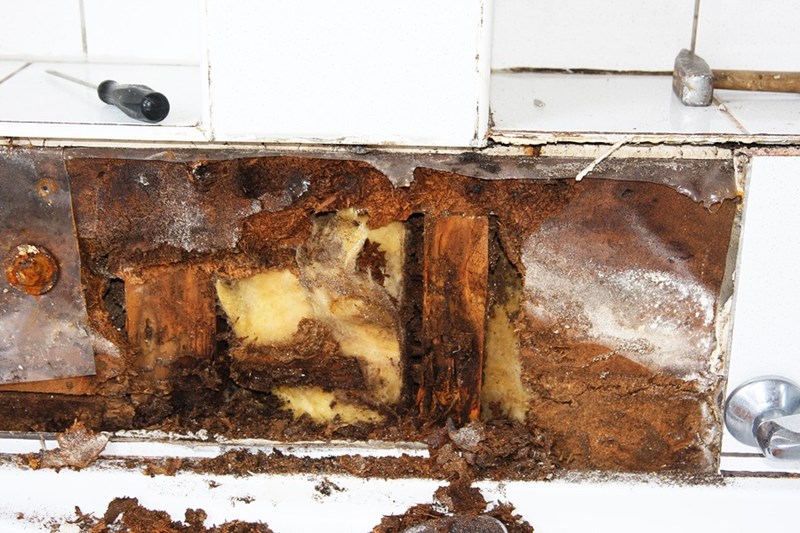Exactly How to Help Prevent Water Damage in Your Bathroom
Exactly How to Help Prevent Water Damage in Your Bathroom
Blog Article
They are making a few great points relating to Looking for Signs of Water Damage in the Bathroom overall in this post which follows.

The bathroom is incredibly susceptible for damp build-up as well as prospective water damages as a result of the constant use water in it. This short article provides basic assessment methods to assist finding water damages dangers.
The regular use water in the shower room makes it very prone for damp build-up as well as prospective water damage. By inspecting it routinely, you can reduce water related damages.
The adhering to collection of assessments is simple to do as well as ought to be done once in every three months in order to maintain your shower room in good shape and to prevent possible water problems triggered by the tub, the shower, pipe joints and plumbing, sinks, closets, and also the bathroom
Do not forget doing these assessments as well as be comprehensive while performing them. Remember that these basic evaluations can save you a great deal of cash by offering early signs for water damage
Sinks and also Cabinets
Sinks and closets are subjected to moisture and also moisture daily and also are commonly neglected. Evaluate on a regular basis under the sink and on the kitchen counter above it. Fix any type of drip in the trap as it might suggest drainpipe issues. Look around the sink, slow-moving draining pipes might suggest a blocked drainpipe. Replace sink seals if they are split or loose.
Tub and Shower
The shower and also tub call for special attention as well as maintenance. Inspect the tiles and also replace if fractured. Ensure that there is no missing cement between the tiles. Check and change cracked caulking at joints where the wall surfaces meet the floor or the bath tub. Blocked drains pipes as well as pipelines troubles will protect against the bathtub from drying out and might show major troubles under the bathtub. Seek advice from a professional promptly to prevent structural damages. Take note of stainings or soft areas around the tub wall surfaces as they may suggest an inner leak.
Plumbing
Signs for water damage are tough to spot considering that most pipes are mounted inside the wall surfaces.
Pay special interest to floor covering and walls dampness and spots as they might show an invisible plumbing issue. Examine moisture levels in adjacent areas as well.
The Bathroom
The bathroom is an at risk water junction. Inspect the water lines as well as look for leakages around the toilet seat, in the hose pipe, as well as under the water container. If you detect any type of indications of dampness on the flooring around the toilet, check for leaks in the toilet edge and also container seals.
Be aware that hanging toilet bowl antiperspirants boosts the opportunities for clogs.
TIPS TO PREVENT WATER DAMAGE IN THE BATHROOM
The average household uses approximately 80-100 gallons of water per person per day. For a family of 4, that's almost 2,500 gallons of water a week! The largest portion of this consumption comes from bathroom use. Flushing the toilet uses the most water, followed by taking a shower or bath. With that much water running through the home, water damage in the bathroom is bound to happen. Knowing how to spot signs of a water leak is essential to preventing long-term damage. This guide provides you with tips to reduce the impact of water damage on your bathroom.
CAUSES OF BATHROOM WATER DAMAGE
Pipe breaks are the most common cause of water damage we see in our daily jobs. The age of a pipe plays a large role in a pipe break as well as corrosion. Over time, the metal begins to break down, allowing water to escape. Frozen pipe breaks are also a concern in the winter months. Toilet overflows caused by paper products or children flushing inappropriate items. Degraded caulking around the toilet or bathtub can allow water seepage, sometimes behind the fixture, into the subfloor or walls. Condensation forms when the water in a pipe is cooler than the air temperature. Beads of water form on the exterior of the pipes, sometimes so much so that the water begins to drip and pool below. Sink or shower backups created by poor drainage. HOW TO PREVENT WATER DAMAGE IN YOUR BATHROOM
Inspect your toilet supply line for worn or frayed hoses and replace them as needed. Winterize your plumbing to prevent a frozen pipe break. Use vent fans to prevent condensation that can lead to mold growth. Routinely check and replace degraded caulking around your toilet or bathtub. Increase the temperature in your toilet tank and insulate your pipes during the warm summer months to keep condensation from forming. Use child safety locks on the toilets. Flush only toilet paper. "Flushable" wet wipes are actually not good for your plumbing system. Additionally, feminine hygiene products should not be flushed. Prevent water from escaping the tub or shower. Make sure shower curtains are in good condition. Inspect shower doors and replace the seal strip if necessary. Wipe up any water that accumulates on the floor and use bath mats. Water left to sit can cause damage to the tiles and flooring. Refrain from using bath products containing heavy oils to avoid a clogged drain.

As an enthusiastic person who reads on How to Prevent Bathroom Water Damage, I thought sharing that piece of content was important. If you appreciated our article kindly make sure you remember to pass it around. Thank you for your time spent reading it.
Details Here Report this page